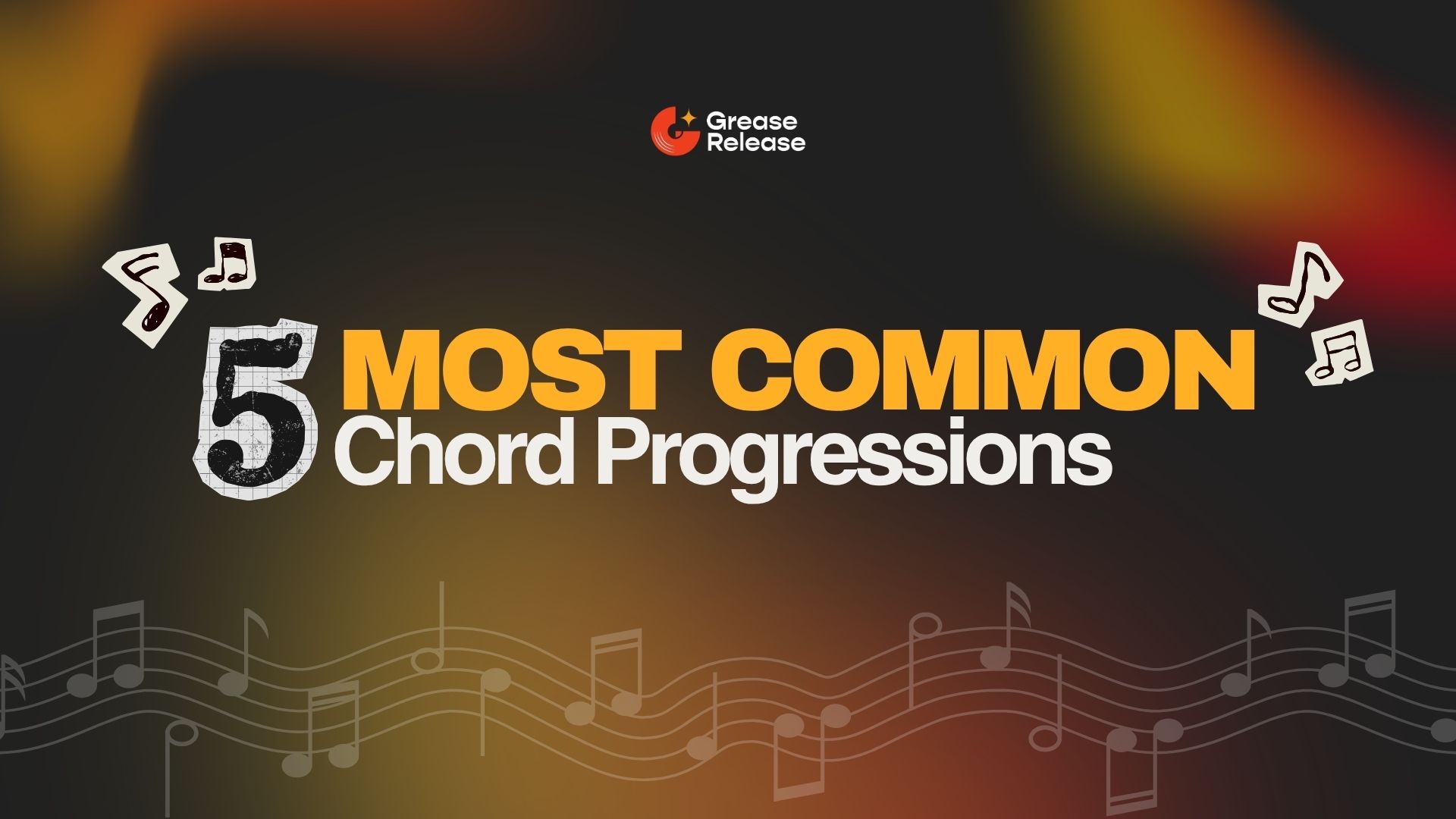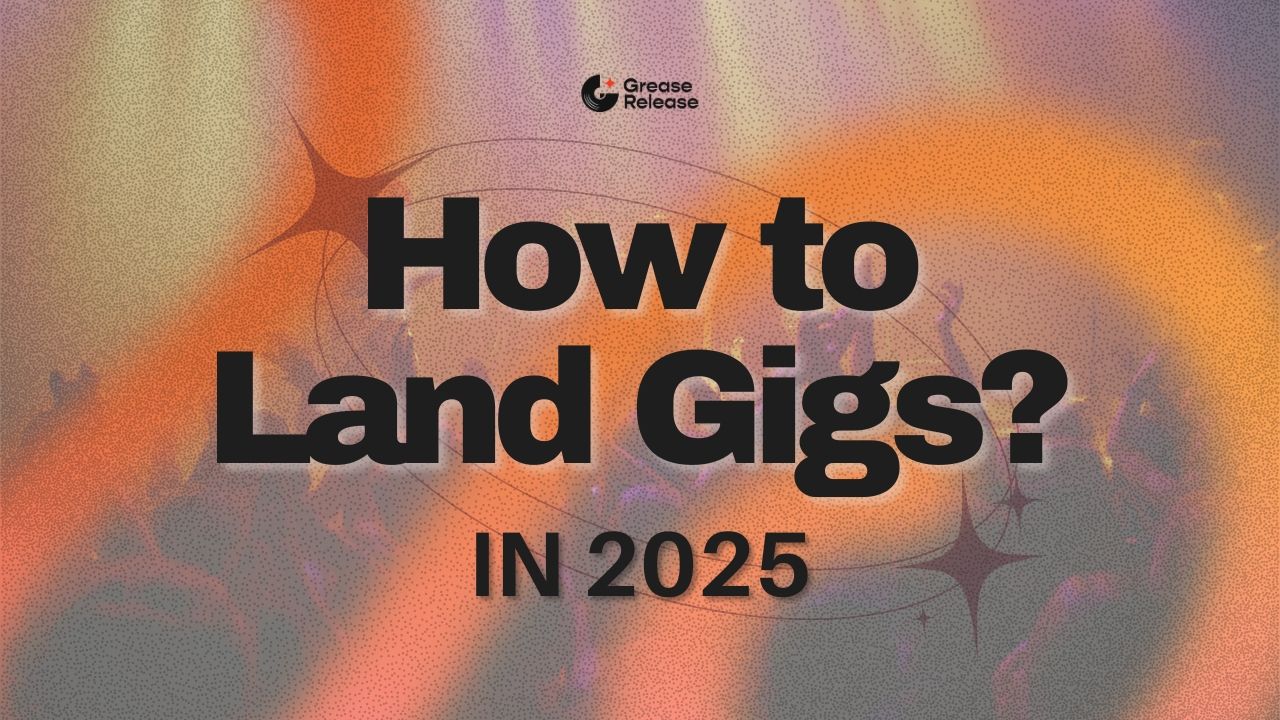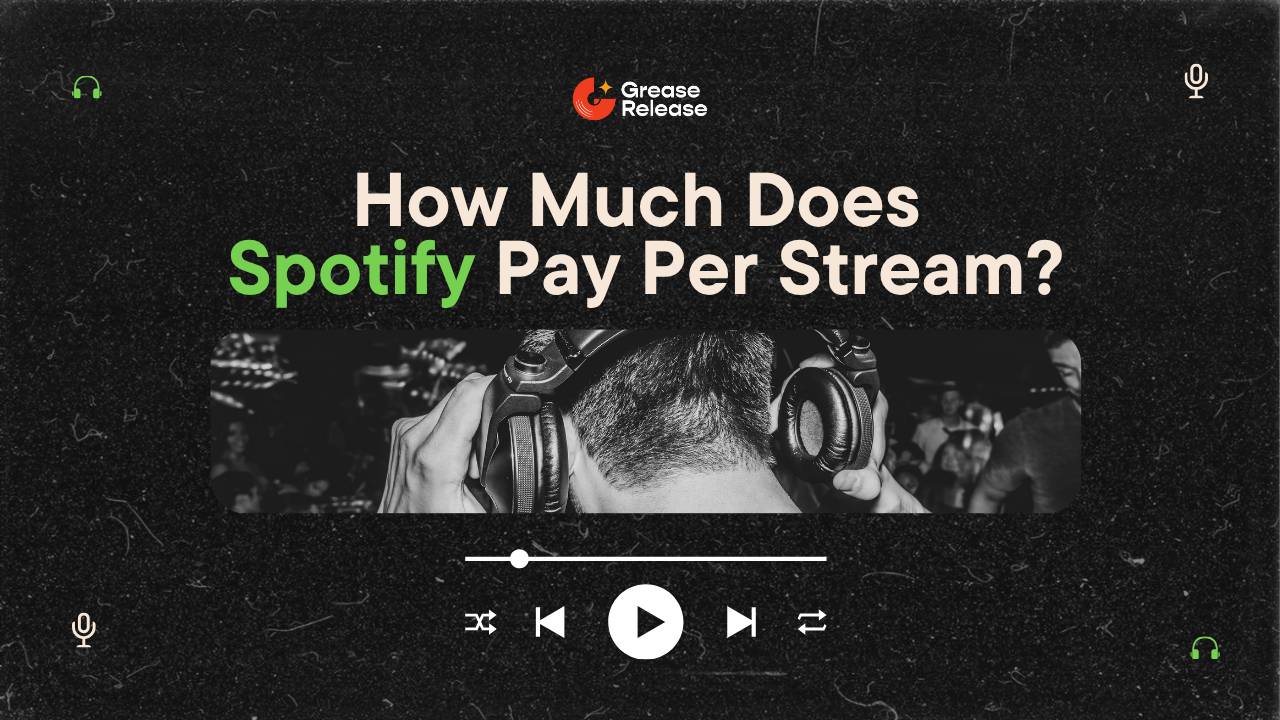
Spotify Pay Per Stream: How Does It Work?
Oct 24, 2025
How Much Does Spotify Pay Per Stream? (2025 Updated Guide)
If you’ve ever wondered how much money artists actually make from Spotify, you’re not alone. Every day, new and established musicians alike search for answers to the question: How much does Spotify pay per stream?
Understanding streaming payouts has become essential for artists to understand how to earn money as a musician. In this blog, we’ll break down exactly how Spotify’s payment system works, the average payout rates, and factors that affect your earnings along with tips to help you maximize your revenue.
- How Spotify’s Streaming Payout Mechanism Works?
- How Much Does Spotify Pay per Stream?
- Factors That Affect Your Spotify Earnings
- Tips for Maximizing Spotify Revenue (Practical Advice)
- Common Misconceptions & FAQs
- Final Takeaway
We've also built a tool that can help you calculate the $/stream and dive deeper into what Spotify actually pays artists. Check it out 👇
How Spotify’s Streaming Payout Mechanism Works?
Before we dive into exact numbers, it’s important to understand how Spotify’s payment structure works behind the scenes. The payout system isn’t as simple as “Spotify pays $X per stream”, it’s based on a shared revenue model.
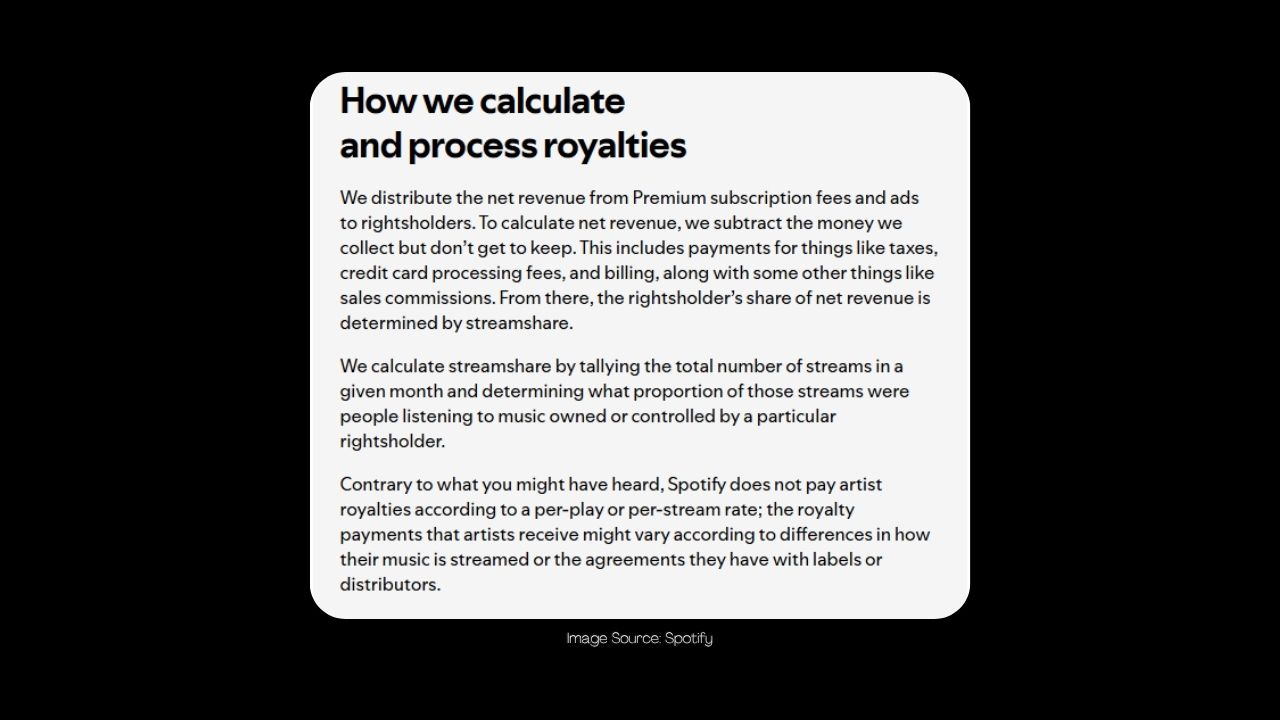
1. Revenue Pool & Pro Rata Model
Spotify doesn’t pay artists directly per stream. Instead, it collects subscription and ad revenue from users, builds a massive revenue pool, and then distributes it to rights holders based on their share of total streams on the platform.
So, if your track accounts for 0.01% of all Spotify streams in a month, you earn 0.01% of the total revenue pool. The more total streams platform-wide, the lower the per-stream rate becomes which explains why Spotify money per stream fluctuates so much.
Think of Spotify’s payout as a slice of a growing pie - your share depends on both your own streams and how many total streams exist across the platform.
2. The Role of Rights Holders & Splits
One of the most misunderstood parts of the question “how does artist make money from Spotify” is that the payment doesn’t go directly to the artist. Spotify pays rights holders first i.e. the labels, distributors, publishers, and collecting societies.
Typical splits might look like this:
- Label takes 50–70%
- Distributor takes 10–15%
- Publishers, songwriters, and performance rights organizations share the rest.

Only what remains after these deductions is what the artist receives. Independent musicians using direct distribution platforms (like DistroKid, CD Baby, or TuneCore) often end up keeping a higher percentage.
So, owning your masters matters!
3. Market / Region / Currency Variation
Not all streams are equal. Spotify’s payouts differ by market/geography as well i.e. streams from the US, UK, or Germany will pay more than those from countries with cheaper subscription plans like India. Exchange rates, local pricing, and premium vs. ad-supported streams all affect the final payout.
Additionally, royalties stack differently depending on what rights you own — mechanical, publishing, and neighboring rights may all apply.
Pro Tip: Use a Spotify royalty calculator to estimate your earnings per country. It’s a quicker way to compare where your audience generates the most value.
4. Variability Over Time
Spotify’s rate per stream has changed slightly over the years. The variation comes from changes in subscription revenue, ad income, total streams, and deal renegotiations with labels.
Older contracts may yield lower rates, while newer direct-distribution deals can sometimes pay more per stream.
Pro Tip: Don’t fixate on exact numbers, focus on stream growth and fan engagement instead. The rate may shift, but building an audience compounds your earnings long-term.
How Much Does Spotify Pay per Stream?
Now that we understand how the system works, let’s get to the question you’re really here for: how much does Spotify actually pay per stream?
1. Published / Reported Averages
The most commonly cited Spotify pay per stream estimate is between $0.003 and $0.005 per stream.
- Some sources reported a gross average of about 0.44¢ per stream for artists under typical distribution deals.
- Other sources found that some artists earning over $50,000 from Spotify had achieved hundreds of millions of streams, illustrating how massive scale is required.
Pro Tip: Use the Spotify royalty calculator regularly to see how your stream count might translate into dollars — but remember, it’s only an estimate.
2. Range & Best-Case vs Worst-Case Scenarios
Spotify payouts aren’t fixed but here’s the general range of what it can look like:
- Low end: $0.0005 – $0.002 per stream
- Typical: $0.003 – $0.005
- High end: $0.01+ (rare; special licensing deals or niche cases)
What determines where you fall in that range? (This is something we break down even further in detail in the next section)
- Type of listeners (premium vs ad-supported)
- Country of streams
- Your deal type (independent vs major label)
- Ownership of master and publishing rights
Pro Tip: Owning your master recordings is one of the best ways to increase your actual per-stream income.
3. How Many Streams to Earn “X Dollars”?
Here’s a quick look at how many Spotify streams translate into approximate earnings (before deductions):
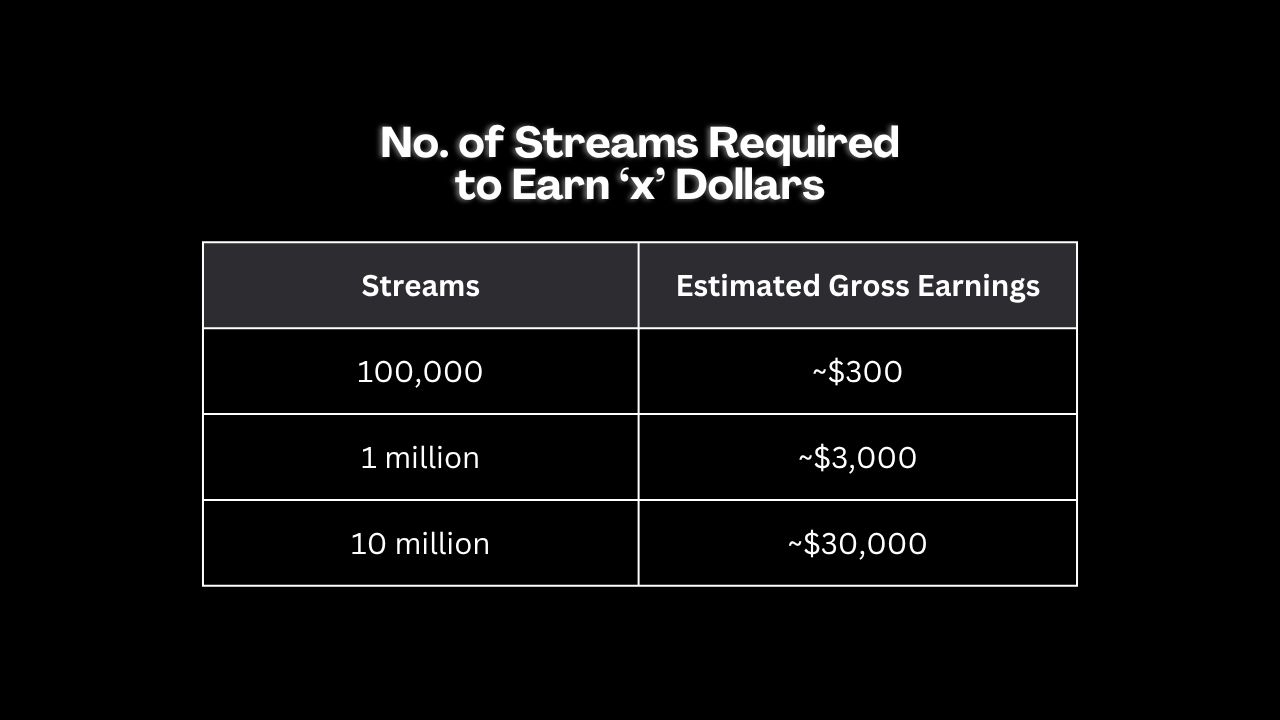
So, how much is 10,000 streams on Spotify? Roughly $30–$50 before any splits which is hardly enough to sustain a career, but a stepping stone toward larger growth.
Factors That Affect Your Spotify Earnings
Even though the base payout rate is out of your control, several factors can significantly influence your total Spotify revenue.
1. Genre, Playlist Placements & Listener Reach
Mainstream genres (pop, hip-hop, EDM) often attract more streams due to larger audiences, while niche genres may yield fewer plays but higher loyalty. Landing on high-value playlists can dramatically increase exposure and Spotify money per stream.
Pro Tip: Build relationships with curators or use music submission platforms to increase your visibility.
2. Stream Duration / Listener Behavior
Spotify only counts a play after about 30 seconds. If listeners skip your tracks too early, your total streams and revenue will suffer.
Tracks with strong intros, hooks, and replay value tend to perform better in algorithms, helping understand how to earn money as an artist more sustainably.
Pro Tip: Optimize song structure for streaming i.e. hook listeners early and maintain engagement.
3. Rights Ownership & Split Negotiations
Owning both your masters and publishing rights means you’ll keep a far larger portion of revenue. Artists who negotiate better splits or go independent earn substantially more per stream.
Pro Tip: Before signing a label or distribution deal, consult a music lawyer to understand exactly how does artist make money from Spotify in your contract.
4. Market / Territory & Currency Effects
If most of your listeners are in lower-paying regions (e.g. Southeast Asia or Latin America), your payout per stream will be lower due to subscription pricing differences.
Pro Tip: Use Spotify for Artists analytics to target your marketing efforts toward countries with higher payouts.
5. Timing, Fan Growth & Catalog Effects
Older tracks continue to earn indefinitely, so your catalog can generate passive income for years. Releasing music regularly helps algorithms recommend your songs more often, boosting your total streams and earnings.
Pro Tip: Schedule releases strategically because consistency drives discoverability, which drives income.
Tips for Maximizing Spotify Revenue (Practical Advice)
Here are some ways you can increase your streaming revenue effectively:
- Get featured on high-value playlists
- Grow your monthly listeners through social media and collaborations
- Encourage full listens, saves, and shares
- Release consistently — singles often perform better than albums
- Retain rights or negotiate favorable splits
- Cross-promote across YouTube, TikTok, and Instagram
- Use “Spotify for Artists” analytics to guide decisions
- Explore other income sources — merch, live shows, sync licensing
- These steps directly contribute to how to earn money as a musician beyond just Spotify alone.
Pro Tip: Diversify your income — treat Spotify as a discovery platform, not your only paycheck
Common Misconceptions & FAQs
1. “Spotify pays $0.01 per stream.”
False. The actual rate is much lower, usually between $0.003–$0.005.
2. “All artists get paid equally.”
Not true — payouts depend on territory, deal type, and ownership structure.
3. “Streams from free-tier users pay the same as premium.”
No. Premium streams pay significantly more due to subscription revenue.
4. “Spotify pays artists directly.”
Spotify pays rights holders (labels/distributors), not the artist directly.
5. Can I live off streaming alone?
Possible for top-tier artists, but most musicians rely on multiple income sources — streaming, touring, merch, and licensing.
Final Takeaway
Spotify is a powerful platform for discovery, but it’s not a money-making system for artists. Use it as part of a bigger ecosystem that includes social engagement, live performances, and diversified income streams. Understanding how to earn money as an artist starts with clarity, not just creativity.
We at GreaseRelease, have a bunch of curators on our network who are looking for new & exciting music to push on their massive playlists. If you make music and want to reach a wider audience, check out our submission platform and get a chance to reach millions of listeners! Submit your tracks now!
Don't miss my newsletter!
Join me on a music entrepreneurship journey with new tips and tricks delivered straight to your inbox.
We hate SPAM. We will never sell your information, for any reason.


